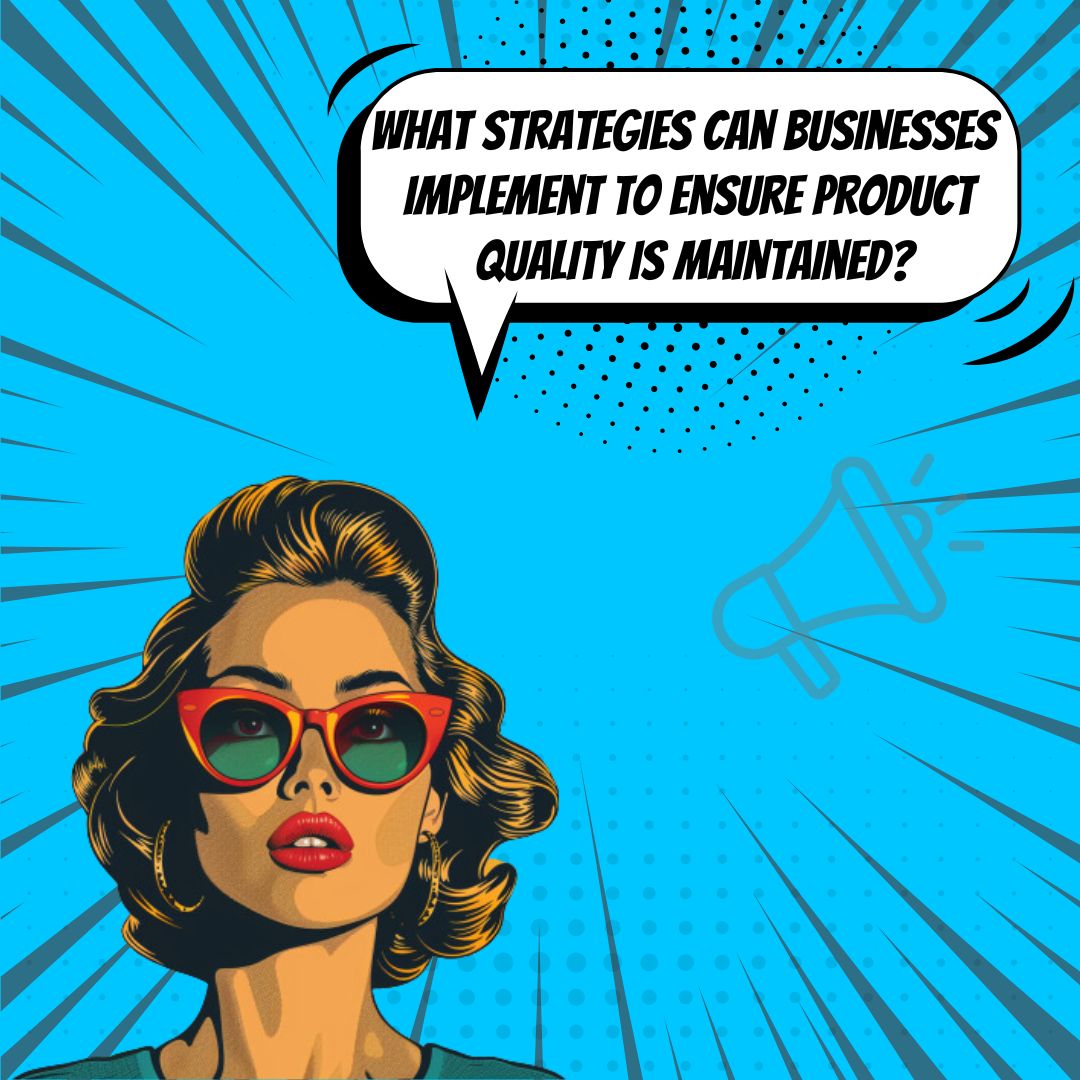Key Takeaways
✅ Prioritize Quality and Document Processes: Ensure quality remains central by documenting processes thoroughly. This provides consistency, aiding in efficient task performance, seamless employee onboarding, and organizational agility.
✅ Focus on Customer Feedback and Market Analysis: Regularly collect customer feedback and conduct market analysis to understand and meet customer needs. Detailed customer profiles help in targeted marketing and retention.
✅ Balance Growth with Stability and Culture: Sustain stable growth by maintaining a clear vision, ensuring team alignment, and focusing on customer satisfaction. Cultivate a strong company culture to navigate scaling challenges.

Introduction
Are you struggling to scale your business without losing sight of what made it successful? Balancing growth with maintaining product quality is a common challenge. This article delves into the essential strategies that entrepreneurs must adopt to achieve growth without compromise. From prioritizing quality standards to gaining insights from customer feedback, we'll unveil actionable steps to help your business flourish sustainably. Get ready to explore innovative solutions and modern trends that maximize your revenue while preserving quality at every stage.
Top Statistics
| Statistic | Insight |
|---|---|
| Small Business Growth and Quality: Nationally, small business sales grew 2% year over year while declining 0.8% month over month, according to Fiserv in March. | Understanding fluctuations in sales can help businesses adjust strategies to balance growth with consistent quality. |
| Industry Performance: The top three industries for sales growth nationally were restaurants, trade contractors, and technical services. | Identifying leading industries provides a benchmark for other sectors looking to enhance growth while maintaining high standards. |
| Growth Strategies: Embracing scalable automation solutions can enhance efficiency, reduce human error, and free up valuable resources. | Implementing automation can provide both growth and quality, allowing businesses to expand without overburdening their workforce. |
| Customer Expectations: Some customers prioritize premium products and services, willing to pay extra for uncompromising quality, while others are more cautious and seek assurance that their investment aligns with the expected value. | Understanding customer priorities is crucial in designing growth strategies that do not compromise the product's quality. |
| Employee Engagement: Building a skilled and committed team that shares the company's vision is instrumental in driving growth while maintaining standards. | A culture that fosters learning and improvement ensures employees are aligned with the company's goals, facilitating sustainable growth. |
The Delicate Balance Between Growth and Quality
Balancing both growth and quality is crucial for business success. Rapid expansion can often lead to diluted product standards, which can hurt customer trust and brand reputation. Why is maintaining quality so challenging while scaling up? The pressure to meet higher demand can stretch resources, leading to declines in both product and service quality. Ensuring a harmonious balance can determine whether a business sustains long-term success or succumbs to mediocrity.
Understanding Customer Expectations
Different customers have different expectations and priorities. Some may look for premium features, while others are more cost-conscious. How can businesses cater to these diverse needs? By gathering and analyzing customer feedback, companies can better tailor their products to meet various quality standards. Is it possible to maintain high quality for both premium and budget products? Feedback plays a significant role in understanding and shaping these varied expectations.
Strategies for Scaling with Quality
Adopting automation solutions can considerably improve efficiency during growth. But how scalable are these tools without sacrificing quality? By investing in modern infrastructure and technology, businesses can better support expansion. Implementing agile processes allows companies to stay adaptable, fostering a culture of continuous learning and improvement. These strategies not only facilitate growth but also ensure that product standards remain high.

Maintaining Quality Through Effective Management
Building a skilled, committed team aligned with the company's vision is vital. How do clear priorities and a quality-focused approach factor into this equation? Regular quality audits and proactive issue resolution can prevent standards from slipping. Delegating responsibilities ensures that quality control remains flexible and robust, even as tasks multiply. Effective management is not merely about oversight but also about cultivating a workforce that values quality as much as growth.
Overcoming Common Challenges
Operational costs, logistics, and workforce training often present hurdles. Balancing cost and quality considerations is essential—can businesses afford to cut corners? Adapting to market changes and industry trends is another challenge that demands continuous attention. Leveraging technology and social media for customer engagement provides invaluable feedback, aiding in quality maintenance. The right strategies can turn these common challenges into advantages for sustainable growth.
Achieving Sustainable Growth
In the race for expansion, it's essential to balance growth with unwavering quality standards. By embracing automation, fostering effective management, and actively engaging with customers, businesses can thrive without sacrificing what makes their products great. Sustainable growth doesn't just benefit the bottom line; it builds a loyal customer base that appreciates consistent quality. Prioritizing quality in every phase of growth ensures long-term success.

AI Marketing Engineers Recommendation
Recommendation 1: Prioritize Customer Feedback for Continuous Improvement: Leverage real-time customer feedback loops to maintain quality while scaling. A study by PwC found that 32% of customers will leave a brand they love after just one bad experience. Utilizing tools like NPS (Net Promoter Score) and CSAT (Customer Satisfaction Score) helps in gathering and acting on feedback swiftly, ensuring that quality isn't sacrificed as you grow.
Recommendation 2: Strategic Use of Automation: Incorporate AI-driven automation to enhance efficiency without compromising quality. According to Gartner, by 2025, AI will be a critical factor in 75% of enterprise applications. Utilizing automated systems for mundane and repetitive tasks enables teams to focus on strategic growth elements, ensuring quality standards are maintained.
Recommendation 3: Adopt Scalable, Yet Personalized, Customer Service: Implement scalable customer service tools that preserve personalization and quality. Tools like chatbots and AI-driven CRM systems (e.g., HubSpot, Salesforce) allow for handling higher volumes of customer interactions without losing the personal touch. Research from Salesforce indicates that 84% of consumers say being treated like a person, not a number, is crucial to winning their business.
Relevant Links
- Unlock Business Growth with AI-Powered Marketing Strategies
- Key Factors for Setting Impactful Campaign Goals
- Mastering Campaign Reach and Audience Size
- Enhancing Consumer Profiling Through User Targeting
Conclusion
Balancing growth and quality is not just an ideal but a necessity for any business aiming for sustainable success. The key insights from this article underscore the importance of understanding customer expectations, investing in scalable solutions, and fostering a culture of continuous improvement. Effective management practices, such as building a committed team and conducting regular quality audits, are essential for maintaining high standards while navigating the complexities of expansion.
Businesses must confront the common challenges of operational costs, market adaptation, and technological integration head-on to strike a harmonious balance. The takeaway is clear: achieving growth without compromising quality isn't just about meeting current demands but also about preparing for future opportunities. As companies move forward, prioritizing quality will not only ensure customer satisfaction but will also cement long-term success in an ever-evolving market.
For businesses seeking to scale effectively, the path is navigable with the right strategies and an unwavering commitment to excellence. The road to growth is demanding, but with a balanced approach, it’s a journey well worth embarking upon.

FAQs
Question 1: What does scaling up mean?
Answer: Scaling up refers to profitably increasing the rate of growth of sales revenues. It involves maintaining or increasing the current rate of growth, regardless of whether it is zero, 5%, or higher.
Question 2: Why is balancing growth and quality important?
Answer: Balancing growth and quality is crucial because rapid growth can compromise quality if not managed properly. It is essential to ensure that growth does not come at the expense of quality, as this can lead to customer dissatisfaction and long-term damage to the business.
Question 3: What are the consequences of a seesaw approach to growth and optimization?
Answer: A seesaw approach can result in instability, employee frustration, and missed opportunities for improvement. It can also compromise the organization's ability to achieve sustainable success.
Question 4: How can an organization successfully manage continuous improvement without leaving team members behind?
Answer: Organizations can use frameworks like PERA (Plan, Enact, Review, and Adapt) and Kaizen to drive continuous improvement. These methodologies emphasize iterative, incremental changes and help ensure that team members are not left behind.
Question 5: What is the Rule of 40, and how does it relate to balancing growth and profitability?
Answer: The Rule of 40 encourages CEOs and marketing leaders to ask the right questions about growth and profitability. It emphasizes the need to balance growth with profitability to ensure sustainable success.
Question 6: How can regions scale up, and what are the benefits of regional scale up?
Answer: Regions can scale up by fostering local ventures that grow rapidly. This leads to good role models, mentors, and business partners for startup entrepreneurs, and benefits local banks, public sector actors, and incumbent corporations.
Question 7: What steps can be taken to ensure quality control as the business grows?
Answer: Implementing a training process, correcting workarounds, and automating tasks can help maintain quality control as the business grows.
Question 8: How can staff be prepared for growth and new positions?
Answer: Providing training and classes for existing staff can help them step into new positions, ensuring employee retention and quality service.
Question 9: What are some key performance indicators (KPIs) to monitor for scaling?
Answer: KPIs such as customer satisfaction, supply chain efficiency, and financial robustness can indicate when it’s time to scale and help maintain quality during growth.
Question 10: How can a business maintain product or service quality with increased demand?
Answer: Maintaining quality with increased demand involves ensuring that processes are streamlined, staff are well-trained, and resources are adequate to handle the growth.

Academic References
- Huang, Y. L., & Perry-Smith, J. E. (2019). Clarifying the Scaling Concept: A Review, Definition, and Measure of Scaling Performance. Journal of Management, 45(1), 37-57. This study clarifies the concept of scaling, distinguishing it from growth, and proposes measures to compare scaling performance among organizations.
- Churchill, N. C., & Lewis, V. L. (1983). The Five Stages of Small-Business Growth. Harvard Business Review, 61(3), 30-50. This work categorizes the challenges and growth patterns of small businesses, providing insights for entrepreneurs to navigate the complexities of small business ownership.
- Autio, E., & Thomas, L. D. W. (2014). Scale-ups and Scaling in an International Business Context. Academy of Management Perspectives, 28(1), 6-18. This research explores the balance between local and global value creation in scaling organizations, highlighting the nuances of rapid growth in single markets.








